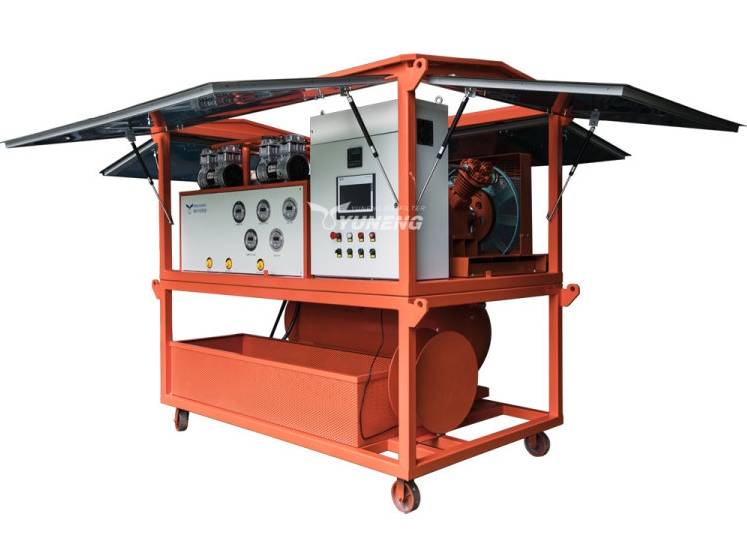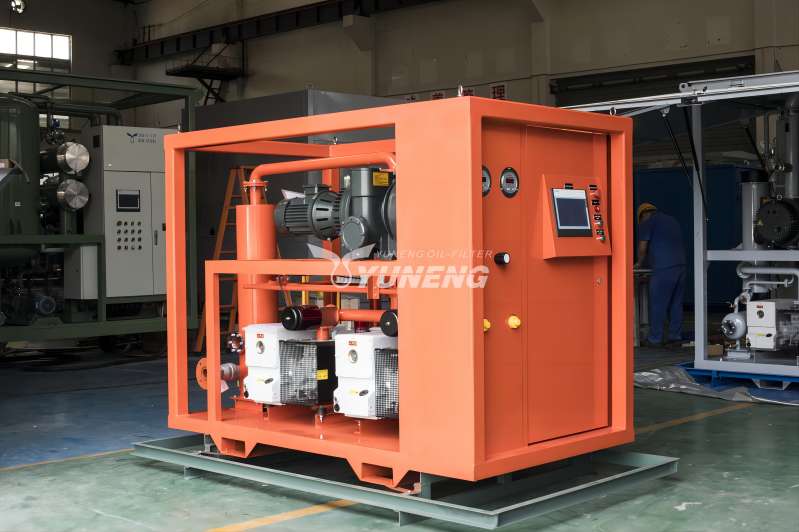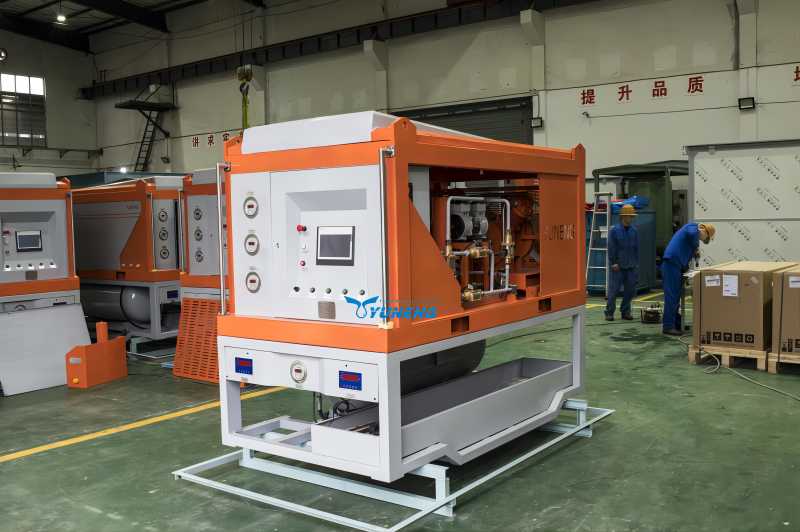Reasons and Locations for SF6 Gas Filling
SF6 gas or sulfur hexafluoride plays a crucial role in the safe and reliable operation of high-voltage electrical equipment. Its unique characteristics make it an ideal choice for electrical insulation and arc quenching, ensuring the smooth operation of the global power grid. However, due to its strong greenhouse gas properties, responsible handling practices are crucial during the refilling process. This article explores the application of SF6 gas, with a focus on its application in transformers and switchgear, in order to provide a clearer understanding of those involved in refilling operations.

What are the characteristics of SF6 gas?
SF6 gas stands out with its unique characteristics and is very suitable for high-voltage electrical applications. These characteristics can be divided into two main functions: electrical insulation and arc quenching.
1. Excellent Electrical Insulator
- Electrical insulation is crucial in high voltage equipment to prevent current from flowing unintentionally between conductors. This can lead to short circuits, equipment damage, and safety hazards.
- SF6 gas boasts superior dielectric strength, meaning it can withstand a high voltage before electrical breakdown occurs. This strength stems from its molecular structure. The six fluorine atoms surrounding the central sulfur atom create a strong electronic cloud, effectively repelling electrical charges and preventing current flow through the gas.
- Compared to other commonly used insulating gases like air or nitrogen, SF6 gas offers a much higher dielectric strength at similar pressure levels. This allows for a more compact design of electrical equipment using SF6 gas for insulation.
2. Superior Arc Quenching
- In high voltage applications, switching operations or faults can generate electrical arcs. These arcs are essentially intense, uncontrolled bursts of current that can cause significant damage to equipment.
- SF6 gas excels at arc quenching due to its high electron affinity and ability to absorb free electrons. During an arc, SF6 gas molecules readily capture free electrons in the arc path, reducing their concentration and ultimately extinguishing the arc.
- The arc quenching capability of SF6 gas is particularly advantageous in switchgear, where frequent switching operations can occur. By effectively extinguishing arcs, SF6 gas ensures the safe and reliable operation of switchgear, minimizing potential damage and disruptions.
Why refill SF6 gas in high-pressure equipment?
The special characteristics of SF6 gas make it the preferred choice for two key components in high-voltage electrical systems: transformers and switchgear.
1. Transformers
- Function: Transformers are vital components in electrical power systems. They operate by transferring electrical energy between circuits with different voltage levels. This allows for efficient transmission of electricity over long distances. During transmission, the voltage needs to be increased to minimize energy loss due to resistance in the wires. Transformers step up the voltage at the generation point and then step it down again for distribution to homes and businesses.
- Importance of Insulation: Within a transformer, the high voltage and low voltage windings are physically separated. Proper insulation is absolutely essential to prevent current from flowing directly between these windings. Any leakage of current can cause a short circuit, leading to catastrophic equipment failure and potential safety hazards.
- Role of SF6 Gas: Due to its exceptional dielectric strength, SF6 gas is used as the primary insulating medium within transformers. It fills the space between the high and low voltage windings. This superior ability of SF6 gas to resist electrical breakdown ensures the windings remain electrically isolated, preventing current leakage and guaranteeing the safe and reliable operation of the transformer.
2. Switchgear
- Function: Switchgear acts as the control center for managing and directing electrical power flow within a system. It consists of various components like circuit breakers, isolators, and fuses. These components perform critical functions like isolating specific sections of the network for maintenance, switching between different power sources, and protecting equipment from overload or fault conditions.
- Arc Generation During Switching: During switching operations within the network, electrical arcs can be generated. These arcs occur due to the sudden interruption of current flow as a switch opens or closes. Arcs are essentially intense bursts of current that can cause significant damage to switchgear components by generating high heat and creating a conductive path.
- Role of SF6 Gas: The arc quenching capability of SF6 gas is crucial for safe and reliable operation of switchgear. When an arc forms during switching, the SF6 gas rapidly absorbs free electrons in the arc path. This reduces the concentration of electrons and extinguishes the arc quickly. By effectively suppressing these arcs, SF6 gas minimizes damage to switchgear components and ensures safe and reliable switching operations within the electrical network.

Responsible practices for SF6 gas refilling
Understanding the application of SF6 gas is crucial for safe and effective refilling practices. The reasons are as follows:
1. Maintaining Optimal Performance
Over time, the level of SF6 gas in electrical equipment can decrease due to leaks or equipment degradation. Refilling with the appropriate amount and purity of SF6 gas ensures equipment continues to operate at optimal efficiency. Knowledge of the specific application allows technicians to determine the correct quantity of gas needed for proper insulation and arc quenching within transformers and switchgear.
2. Safety Considerations
SF6 gas is an extremely potent greenhouse gas. Improper handling and leaks during refilling can contribute significantly to greenhouse gas emissions. Understanding the applications of SF6 gas allows technicians to follow appropriate procedures for gas handling, minimizing leaks and ensuring responsible environmental practices during the refilling process.
3. Regulation and Compliance
Several regulations govern the use and handling of SF6 gas due to its environmental impact. Knowledge of the applications where SF6 gas is used helps technicians stay informed about relevant regulations and ensure refilling practices comply with established environmental standards.
Yuneng SF6 Gas Refilling Equipment
Since proper refilling is essential for maintaining the optimal performance of equipment using SF6 gas, selecting the right equipment is crucial. Yuneng offers a range of SF6 gas refilling equipment designed for various needs and applications. Here are some of their recommended options:
- SF6 Gas Recovery and Refilling Machine: This versatile machine combines the functionalities of both gas recovery and refilling in a single unit. It features a vacuum pump, a precision gas recovery mechanism, a gas liquefying condenser, a robust filtration system, and an intuitive control panel. This all-in-one solution allows for efficient recovery of SF6 gas from electrical equipment, purification of the recovered gas, and refilling with the same high-purity gas.
- SF6 Gas Refilling Machine: For applications where gas recovery is not required, Yuneng offers dedicated SF6 gas refilling machines. These machines typically include a compressor, a vacuum system with anti-oil return devices, a condensation system, a storage tank, and a filtration system. They provide a cost-effective solution for refilling equipment with fresh, high-purity SF6 gas.
- Mobile SF6 Gas Refilling Unit: For situations requiring on-site refilling at various locations, Yuneng offers mobile SF6 gas refilling units. These units are mounted on trailers or trucks, making them highly portable and convenient for field service applications. They often incorporate the same core functionalities as stationary refilling machines, ensuring efficient and safe refilling wherever needed.

Conclusion
SF6 gas plays a critical role in the reliable operation of high voltage electrical equipment. Understanding its applications in transformers, switchgear, and other components is essential for safe and effective refilling practices. With growing environmental concerns, proper handling, leak minimization, and gas recycling are crucial for minimizing the environmental impact of SF6 gas. As research explores alternatives, SF6 gas is likely to remain a key player in the high voltage electrical landscape for the foreseeable future, but with a continued focus on responsible use and environmental sustainability.
